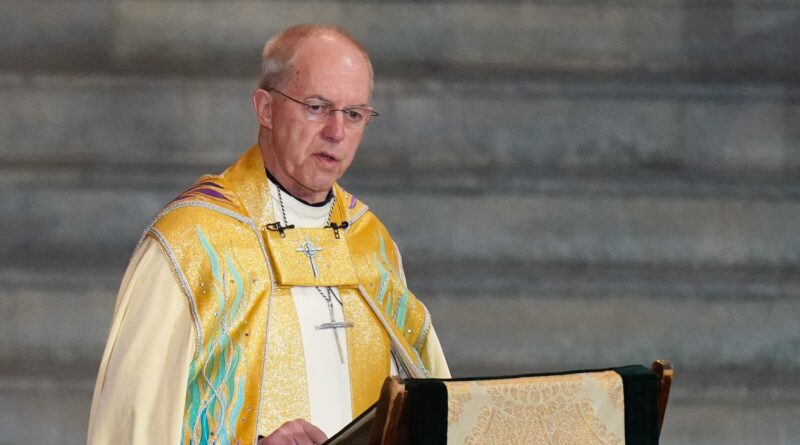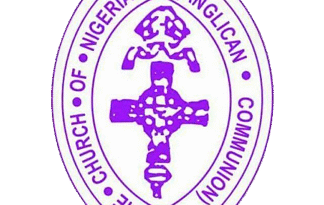Archbishop Resigns! Scandal Rocks the Church of England
The Archbishop of Canterbury, Justin Welby’s resignation on Tuesday, November 12, came as a shock to the people in the Anglican Communion and its more than 85 million participants in 165 countries. the United Kingdom, where the king resides as the head of the church in England and the archbishop is the senior cleric, were mostly hit by this shock.
The scandal surrounding Welby’s downfall shook many Anglican faithful as to the role he played in the “conspiracy of silence to downsize the largest sexual abuse to have hit the modern Church of England, which results from the resilience of the archbishopric, which has its roots in the Middle Ages and has passed through years of pain.
Pope Gregory the Great in the sixth century sent Augustine, an Italian monk, not the northern African doctor of the church, to Britain to convert people who had experienced waves of invasion by the non-Christians after the Romans left the island.
Augustine arrived in Kent in 597 and found a Celtic church that had no wish to accept outside interference. But after baptising King Ethelbert, who ruled from Canterbury and controlled neighbouring tribes, Augustine enlarged the authority of the pope and the Roman Church and is also considered the first Archbishop of Canterbury.
Until the Reformation in the 16th century, the Archbishop of Canterbury exercised his own power and influence, acting independently of the throne. Also during the conflict of the early Middle Ages, secular and religious leaders relied on each other for the loyalty of both subjects and believers. This didn’t show that the king and archbishop were always in agreement with everything.
Archbishops were frequently elevated from smaller English bishoprics, with their formal election conducted by the monks of Canterbury Cathedral and confirmed by the pope. At times, the pope attempted to bring in foreign candidates to advance his political agenda, while monarchs sought to place their allies in the role. These intertwined relationships often led to conflict and, on occasion, even killing or death.
King Henry II used the opportunity to bring together the highest secular and ecclesiastical offices in the person of his loyal friend and effective chancellor, Thomas Becket. On the same day, he was ordained a priest, consecrated a bishop, and became primate of England. This happened after the archbishopric fell empty in 1162.
Becket, who seems to have had a religious conversion, changed devotion. He opposed Henry’s attempts to extend royal power at the expense of the church. Their fight became so high that Becket became violent, and that made him lose the support of the English clergy and go into exile.
Henry may never have uttered the famous words supplied to him by T.S. Eliot in the verse drama “Murder in the Cathedral”—“Will no one rid me of this meddlesome priest”—but the king did encourage Becket’s demise. The archbishop was cut to pieces at Canterbury’s high altar by four of Henry’s knights, precipitating a crisis and the king’s own excommunication, ultimate penance, and reconciliation with Rome.
Henry’s successors were also of no good. In 1207, lots of inappropriate elections were conducted by Pope Innocent III; he forced the monks of Canterbury to accept his choice of Stephen Langton. King John did not accept Langton, and the king’s plan to resist Langton led to England being placed under prohibition. The whole country was denied all church services, including marriages and baptisms, from 1208-1213.
More dire for the king was that the prohibition removed the nobility’s oaths of loyalty, leading to unrest and ultimately revolt. This was what made John sign the Magna Carta at Runnymede, establishing the roots of English liberty from arbitrary governance.
Thomas Cranmer was known as the most influential Archbishop of Canterbury and also a loyal supporter of Henry VIII’s break from the Roman Church and the principle of royal supremacy over church affairs that would help spur the Protestant Reformation. Cranmer was also the author of Anglicanism’s Book of Common Prayer, which established much of the doctrinal and liturgical foundations that still echo in the Church of England.
Faith in Action: Giving Back to the Community TikTok Files Emergency Petition To Prevent US Ban
Cranmer’s efforts to create a new English church ultimately sealed his fate. Following the accession of Queen Mary, the Catholic daughter of Catherine of Aragon, Cranmer made unsuccessful attempts to reconcile with the Catholic Church. He was executed in 1556 by burning at the stake. Moments before his death, Cranmer renounced his recantations of the English church, dying as a martyr for Anglicanism.
We consider ourselves too reasonable (and irreligious) today for such behaviour, but the consequences of Welby’s resignation will be complicated and, in other ways, politically significant.
The prime minister, based on protocol and precedent, will advise the British king on whom to appoint as the next archbishop, although the committee decides on behalf of the monarch. The Archbishop of Canterbury is also a member of the House of Lords by virtue of his office. Traditionally, retired archbishops have been awarded life peerages to maintain their offices.
But what of an archbishop who retires in disgrace? There are no precedents. His living antecedent, Baron Williams of Oystermouth, formerly known as Rowan, who stepped down as Archbishop in 2012, also retired from the House of Lords in 2020 and has retired to academic life, commenting occasionally on social matters.
Welby, who may be reluctant to assert his spiritual authority, might find value in following the example of retired Catholic popes who embraced a life of obscurity after their resignations. After issuing a decree permitting papal resignation, Celestine V was the first to renounce in 1294 but spent the rest of his life imprisoned by his successor, the controversial Boniface VIII. Also, Gregory XII, who stepped down in 1415 to resolve the Great Schism dividing the church, retired to rural Italy. More recently, Benedict XVI, who resigned in 2013, lived quietly in a monastery, making rare public appearances until he died in 2022.
Content Credit| Igbakuma Rita Doom
Picture Credit | https://news.sky.com/story/justin-welby-who-is-the-outgoing-archbishop-of-canterbury-forced-to-resign-over-sex-abuse-scandal-13253005




